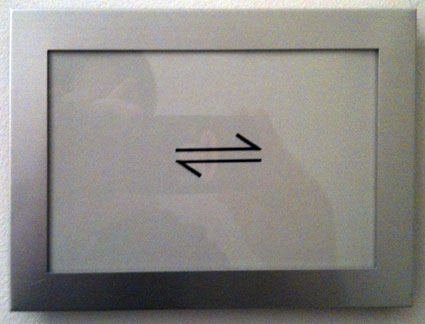ChittahChattah Quickies
I gave a talk recently where I advocated for the importance of being aware of pop culture; this led to an interesting conversation (where not all parties agreed with my proposal). This set of quickies is dedicated to pop-culture-specific examples of note.
‘Les Misérables’ and Irony [NYT] – While I haven’t seen (and don’t plan to see) this movie (the stage show was enough for a lifetime), this analysis of the film’s cultural performance (and why that may explain it’s appeal to some) is pretty wonderful.
The key to what is intended by these technical choices was provided for me by Hooper himself when he remarked in an interview (also printed in USA Today) that while “we live in a postmodern age where a certain amount of irony is expected, [t]his film is made without irony.” Irony is a stance of distance that pays a compliment to both its producer and consumer. The ironist knows what other, more na?Øve, observers do not: that surfaces are deceptive, that the real story is not what presents itself, that conventional pieties are sentimental fictions.
The artist who deploys irony tests the sophistication of his audience and divides it into two parts, those in the know and those who live in a fool’s paradise. Irony creates a privileged vantage point from which you can frame and stand aloof from a world you are too savvy to take at face value. Irony is the essence of the critical attitude, of the observer’s cool gaze; every reviewer who is not just a bourgeois cheerleader (and no reviewer will admit to being that) is an ironist.
“Les Misérables” defeats irony by not allowing the distance it requires. If you’re looking right down the throats of the characters, there is no space between them and you; their perspective is your perspective; their emotions are your emotions; you can’t frame what you are literally inside of. Moreover, the effect – and it is an effect even if its intention is to trade effect for immediacy – is enhanced by the fact that the faces you are pushed up against fill the screen; there is no dimension to the side of them or behind them; it is all very big and very flat, without depth. The camera almost never pulls back, and when it does so, it is only for an instant.
Netflix to Deliver All 13 Episodes of ‘House of Cards’ on One Day [NYT] – I’m intrigued by how technology affords shifts in media consumption and then how those shifts inform the content of the media itself.
Netflix will release a drama expressly designed to be consumed in one sitting: “House of Cards,” a political thriller starring Kevin Spacey and Robin Wright. Rather than introducing one episode a week, as distributors have done since the days of black-and-white TVs, all 13 episodes will be streamed at the same time. “Our goal is to shut down a portion of America for a whole day,” the producer Beau Willimon said with a laugh. “House of Cards,” which is the first show made specifically for Netflix, dispenses with some of the traditions that are so common on network TV, like flashbacks. There is less reason to remind viewers what happened in previous episodes, the producers say, because so many viewers will have just seen it. And if they don’t remember, Google is just a click away. The show “assumes you know what’s happening all the time, whereas television has to assume that a big chunk of the audience is always just tuning in,” said Ted Sarandos, Netflix’s chief content officer.
Muzak, Background Music to Life, to Lose Its Name [NYT] – Do we mourn when a derided brand goes away? The awful experiences that brand promised us – and perhaps much much worse – still seem to be on offer. I will shed no tear.
The Muzak name – long part of the American vernacular, if sometimes as the butt of jokes – will be retired this week as part of a reorganization by its owner, Mood Media. The company is consolidating its services under a single brand, Mood, thus eliminating the Muzak name…”We have a team of music gurus, visual specialists, sound and scent-tech experts,” Mr. Abony said. “We develop compelling, consistent experiences that connect our clients with their customers. The new brand signifies the integration of the company.”




















































